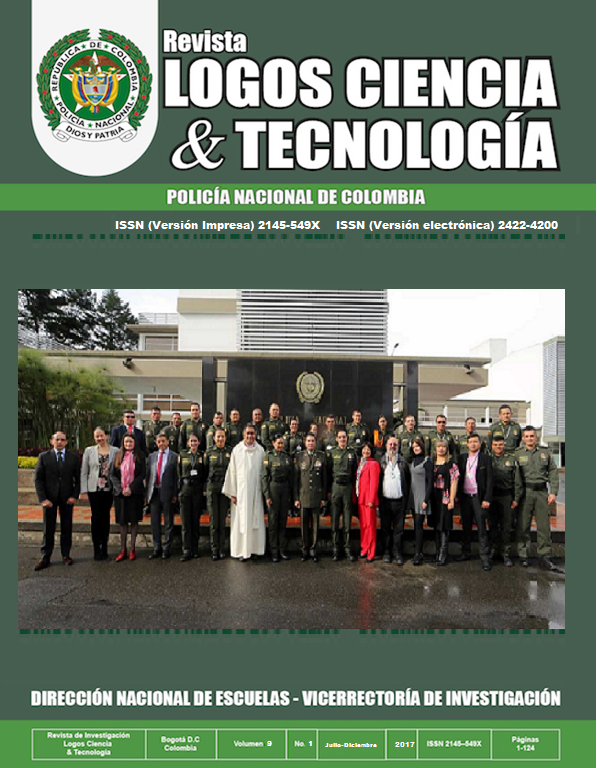Mediation of NTIC in mathematics: Humanistic Model
DOI:
https://doi.org/10.22335/rlct.v9i1.414Keywords:
Pedagogical model, Flipped classroom, geogebra, electronic boardAbstract
The objective of this research was to design a pedagogical model from a human vision based on learning under the cognitive approach whose most relevant exponents for this study were Ausubel and Vygotsky, from a methodology to strengthen the mathematical competences of students of basic education, to Through the implementation of didactic strategies mediated by new NICT technologies in the application of the concept of function. The research was qualitative, action research, applied to a sample of 37 students who were intervened through the implementation of four strategies embodied in didactic sequences, except for the inverted classroom model, these were mediated by the TICs among them (Digital Board , Blogs, web 2.0 platforms, Geogebra software, digital tablets, PCs and social networks) that allowed transformation processes in the classroom as a main factor and determinant of the educational process to the student and teamwork as a social activity contributing to the achievement of associated learning To the concept of function and development of activities in class, enhancing the scope of competencies. In turn, the digital resources used allowed the achievement of the proposed objectives, an improvement in academic performance and a high degree of motivation towards the work in class in the area of mathematics and propitiated the autonomy, responsibility and critical sense of the student.
Downloads
References
Abueida, A., Nielsen, M., & Tam, T. (2010). Inverse spread limit of a nonnegative matrix. Proyecciones, 29(2), 110-122.
Admiral, T. D. (2016). Conceptual and mathematical difficulties presented by physics students at the final semesters of the course. Revista Brasileira De Ensino De Fisica, 38(2) doi:10.1590/S1806-11173822122
Arceo, F. D. B., Rojas, G. H., & González, E. L. G. (2002). Estrategias docentes para un aprendizaje significativo: una interpretación constructivista. México: Mcgraw-Hill.
Bagaria, J. (2013). On turing's legacy in mathematical logic and the foundations of mathematics. [El legado de turing en la lógica matemática y los fundamentos de las matemáticas] Arbor, 189(764) doi:10.3989/arbor.2013.764n6002
Balaguer Fàbregas, M. C., & Vidal Raméntol, S. (2013). Methodological principles for working with mathematics in primary education degree (UIC). Ilu, 18, 63-74. doi:10.5209/rev_HICS.2013.v18.44226
Cantoral, R. (2013). Tendencias: Los métodos de investigación para profesionalización docente en matemáticas. Revista Latinoamericana De Investigacion En Matematica Educativa, 16(1), 5-12.
Carrera, B., & Mazzarella, C. (2001). Vygotsky: enfoque sociocultural. Educere, 5(13), 41-44.
Ferreira, A., Salcedo, P., & Del Valle, M. (2014). Lexical availability study in the field of mathematics. Estudios Filologicos, (54), 69-84.
Gutiérrez, R. C., & Colmenero, M. J. R. (2014). La competencia digital en la formación de los futuros maestros: percepciones de los alumnos de los Grados de Maestro de la Facultad de Educación de Albacete. RELATEC: Revista Latinoamericana de Tecnología Educativa, 13(2), 119-133.
Largo, M., Jaimes, E. y Largo, Y. (2014). Abordando el aprendizaje de matemáticas. Eco.Mat.; 5(1):60-65
Pabón-Gómez, J., Nieto-Sánchez, Z., & Gómez-Colmenares, C.A. (2015). Modelación matemática y GEOGEBRA en el desarrollo de competencias en jóvenes investigadores. Revista Logos Ciencia & Tecnología, 7(1), 65-70. doi:http://dx.doi.org/10.22335/rlct.v7i1.257
Rodríguez, S., Herráiz, N., Prieto, M., Martínez, M., Picazo, M., Castro, I., & Bernal, S. (2010). Investigación acción. Métodos de investigación en Educación Especial. España: Trillas
Torres Rodríguez, C. A., & Recedo Lobo, D. M. (2014). Estrategia didáctica mediada por el software Geogebra para fortalecer la enseñanza-aprendizaje de la geometría en Estudiantes de 9° de Básica Secundaria (Doctoral dissertation, Universidad de la Costa CUC).
Turizo Arzuza, M. (2014). En la búsqueda de nuevas formas de interacción sociodiscursiva en entornos virtuales de aprendizaje: El nuevo rol docente. Revista Logos Ciencia & Tecnología, 5(2), 263-273. doi:http://dx.doi.org/10.22335/rlct.v5i2.123
Vergel, M., Gallardo, H., & Martínez, J. (2014). Factores asociados al rendimiento académico en estadística de estudiantes de administración pública. Bogotá: Colección Pedagogía Iberoamericana.
Vergel-Ortega, M., Martínez-Lozano, J., & Zafra-Tristancho, S. (2016). Factores asociados al rendimiento académico en adultos - Factors associated with academic achievement in adults. Revista Científica, 2(25), 206-215. doi:https://doi.org/10.14483//udistrital.jour.RC.2016.25.a4
Downloads
Published
Issue
Section
License
This journal provides free and immediate access to its content (https://creativecommons.org/licenses/by/4.0/legalcode#languages), under the principle that making research available to the public free of charge supports greater global knowledge exchange. This means that the authors transfer the Copyrights to the journal, so that the material can be copied and distributed by any means, as long as the authors’ recognition is maintained, and the articles are not commercially used or modified in any way.
































